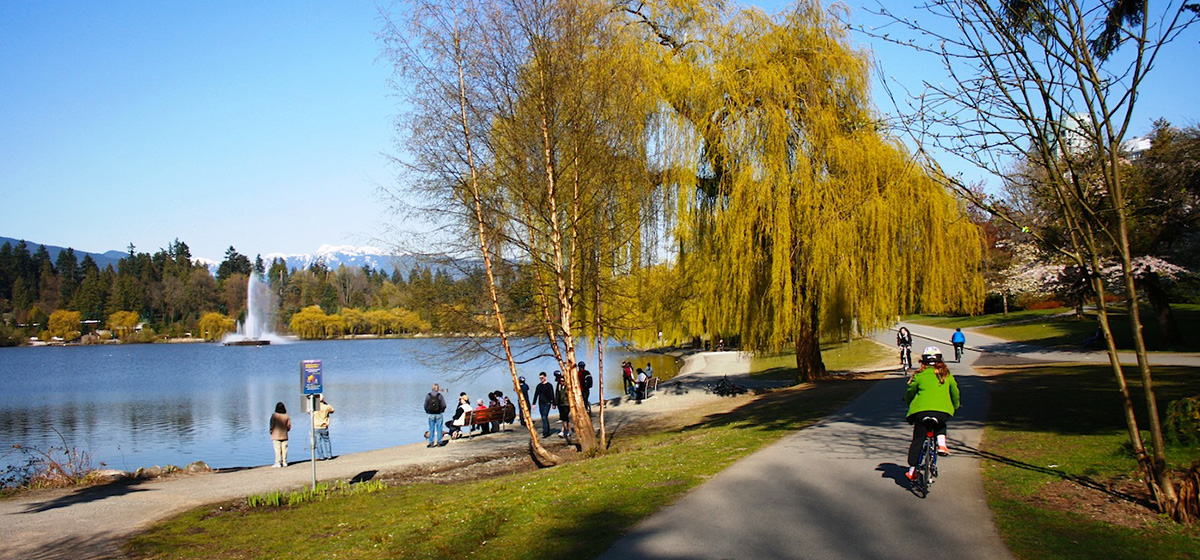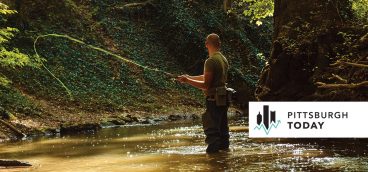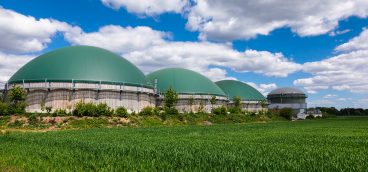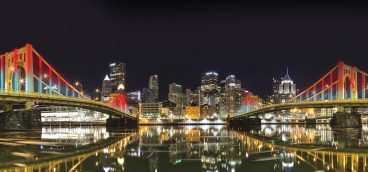Adding Amenities to Bike Trails: What Riders Experience Matters

The City of Pittsburgh is poised to gain dozens of miles of new bike lanes in the next decade. While avid cyclist Tom Vesch welcomes the expansion, he suggests thinking beyond the trails themselves to consider the broader experience of riders.
“Our burgeoning trail system in the city could be enhanced to include amenities along them such as spray water parks, sand volleyball courts, playgrounds, food truck parking and areas featuring art and history,” Vesch, a senior paralegal with Reed Smith, wrote when submitting the idea to the 2019 Pittsburgh Tomorrow Contest.
Adding such services was inspired by Vesch’s trip to the bike trails of Stanley Park near downtown Vancouver, British Columbia, just one of several cities across North America that combine their bike paths with local cultural and recreational resources.
In Austin, Texas, the 10-mile Butler Hike and Bike trails encompassing the city’s Lady Bird Lake features foot showers, water fountains for both humans and canines and connections to nearby natural pools for swimmers and kayakers.
Portland, Ore.’s Eastbank Esplande, a 1.5-mile loop through downtown on the banks of the Willamette River, features a series of historic markers detailing the history of the riverfront as well as several large-scale sculptures commissioned by the city.
Work to enhance the experience of riders with more amenities in southwestern Pennsylvania would likely involve local governments, trail and biking groups and others who contributed to the bike lanes and trails already in the region today.
But the results could bring benefits to the greater community, as well as those who ride on the trails. Popular bike paths tend to give local economies a boost, experts say. “Bicycle tourism is something like a billion-dollar industry in the United States. We should be trying to capture as much as possible,” said Scott Bricker, executive director of the nonprofit Bike PGH.
“We could be investing in and outfitting Pittsburgh and its surrounding municipalities to be more bike-friendly. That way, when bicycle tourists get to Pittsburgh they can easily stay on their bikes and visit the neighborhoods, visit business districts, go to their hotel and go to restaurants.”
Accommodating bicycling and walking has gotten more attention and investment in recent years. Yet, the City of Pittsburgh still has a relatively small number of bike lanes compared to other cities its size.
According to a 2018 national report from the League of American Bicyclists, Pittsburgh has 6.5 miles of protected lanes and 29.2 miles of other mixed-use bike lanes. It adds up to 1 mile of bike infrastructure per square-mile, the fifth-lowest of all small and midsize American cities.
Those numbers are likely to climb in the next several years. The city’s 2020 capital budget includes $3.4 million to upgrade and expand a number of bike lanes and trails around the city, while the Department of Mobility and Infrastructure is set to release its 10-year bike plan for public comment early this year.
Embracing cycling as a key component of local transportation policy would go a long way toward laying the foundation for a robust network of recreation and cultural amenities along our bike trails, Bricker said. He and Bike PGH envision a future system where bike tourists heading to the museums share lanes with locals running their errands. “We’re for upgrading our entire trail system to make them useful 24/7,” he said. “The people who live here benefit just as much, if not more, than the people we’re trying to attract.”





